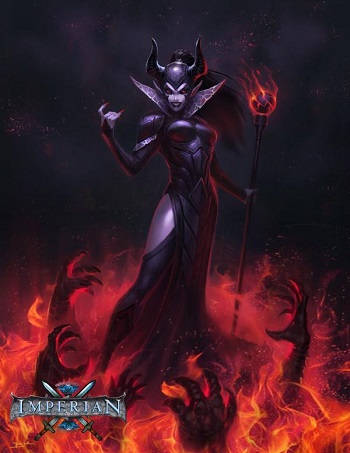Reflexes: Difference between revisions
From Iron Realms Nexus Client Documentation
No edit summary |
No edit summary |
||
| (32 intermediate revisions by 3 users not shown) | |||
| Line 1: | Line 1: | ||
The | [[File:Elf-summoner.jpg|right|frame|caption|A summoner from Imperian.]] The Nexus client allows for basic automation of your game experience by creating triggers, aliases, keybindings, and variables. These types of automation are referred to as ''reflexes''. Reflexes will allow you to automatically enter commands when text is sent to you, quickly enter commands with a keystroke, and create short custom commands to send more information to the game. | ||
=== Types of Reflexes === | |||
Reflexes are grouped into six major categories; '''Aliases''', '''Events''', '''Keybinds''', '''Triggers''', '''Functions''', and '''Variables'''. The seventh category, '''Groups''' are used for organization. | |||
All reflexes are created, deleted, edited, and managed from the Reflexes tab in the settings window. Variables are the only exception and they are managed from their own Variables tab in settings. | |||
=== | === Aliases=== | ||
[[Aliases]] are used to create very short commands that can be quickly entered and execute longer or multiple commands instantly. ''Note that the Iron Realms games also have in-game alias systems that are separate. HELP ALIASES will explain, in-game.'' | |||
=== Keybinds === | |||
[[Keybinds]] are similar to aliases but instantly send a command to the game with a single keystroke or keystroke combination. For example, control-h to sip health. | |||
=== | === Triggers === | ||
[[Triggers]] are used to instantly send a command to the game after receiving specific text from the game. Triggers have been used to create simple to very complex fighting systems. | |||
=== Events === | |||
[[Events]] are used to perform an action when a pre-defined event happens, such as a defence being lost, or another player entering your room. | |||
=== | === Functions === | ||
[[Functions]] are an advanced scripting option. Functions use javascript to process more complicated procedures. Functions are normally used by triggers, aliases, or keybinds. | |||
=== Variables === | |||
[[Variables]] are usually used to save information for use in triggers, aliases, or keybindings. A popular use for varibles is assigning the monster you are fighting to a ''target'' variable and then using a single button to attack the target. Variables are managed from their own tab in settings and not in the reflexes tab. | |||
=== Groups === | |||
[[Groups]] are not technically a reflex, but are used to help organize and manage them. Systems can quickly grow to have hundreds of separate reflexes. You can put your reflexes into groups to better organize them. You can even use reflexes to automatically turn entire groups on and off. | |||
Latest revision as of 19:18, 14 October 2016

The Nexus client allows for basic automation of your game experience by creating triggers, aliases, keybindings, and variables. These types of automation are referred to as reflexes. Reflexes will allow you to automatically enter commands when text is sent to you, quickly enter commands with a keystroke, and create short custom commands to send more information to the game.
Types of Reflexes
Reflexes are grouped into six major categories; Aliases, Events, Keybinds, Triggers, Functions, and Variables. The seventh category, Groups are used for organization.
All reflexes are created, deleted, edited, and managed from the Reflexes tab in the settings window. Variables are the only exception and they are managed from their own Variables tab in settings.
Aliases
Aliases are used to create very short commands that can be quickly entered and execute longer or multiple commands instantly. Note that the Iron Realms games also have in-game alias systems that are separate. HELP ALIASES will explain, in-game.
Keybinds
Keybinds are similar to aliases but instantly send a command to the game with a single keystroke or keystroke combination. For example, control-h to sip health.
Triggers
Triggers are used to instantly send a command to the game after receiving specific text from the game. Triggers have been used to create simple to very complex fighting systems.
Events
Events are used to perform an action when a pre-defined event happens, such as a defence being lost, or another player entering your room.
Functions
Functions are an advanced scripting option. Functions use javascript to process more complicated procedures. Functions are normally used by triggers, aliases, or keybinds.
Variables
Variables are usually used to save information for use in triggers, aliases, or keybindings. A popular use for varibles is assigning the monster you are fighting to a target variable and then using a single button to attack the target. Variables are managed from their own tab in settings and not in the reflexes tab.
Groups
Groups are not technically a reflex, but are used to help organize and manage them. Systems can quickly grow to have hundreds of separate reflexes. You can put your reflexes into groups to better organize them. You can even use reflexes to automatically turn entire groups on and off.